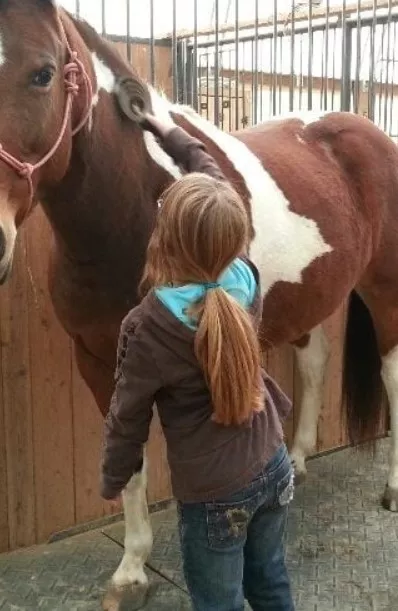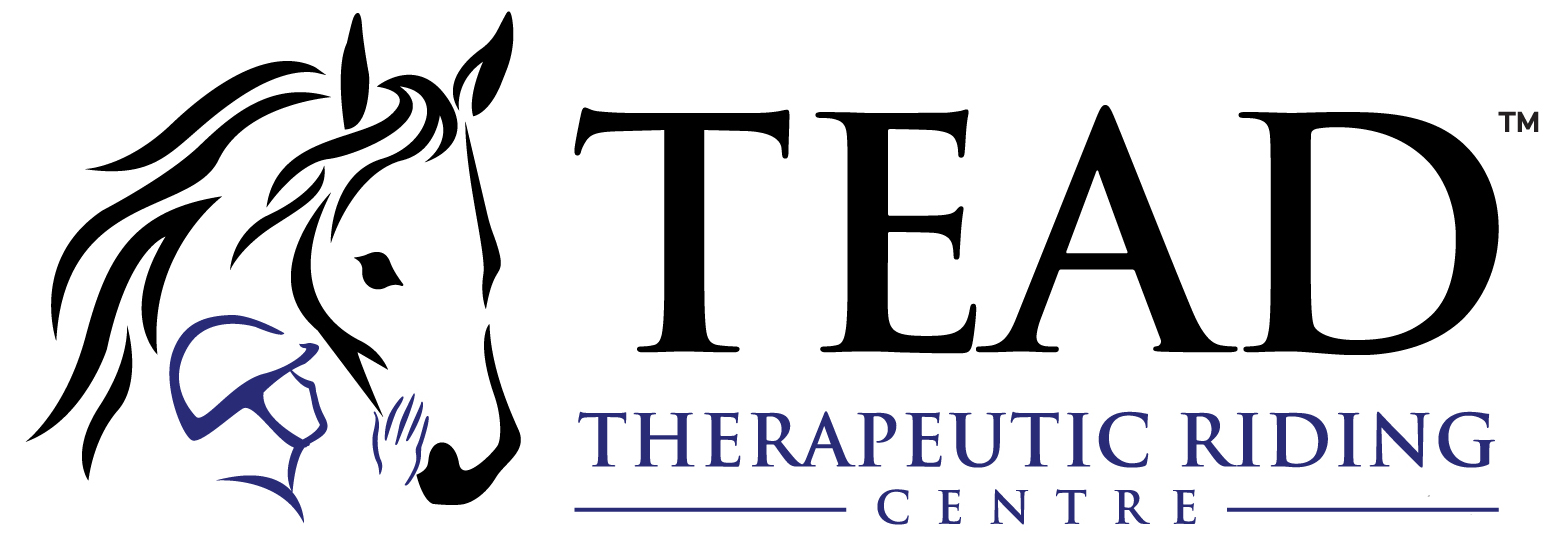
TEAD is Offering:
-Occupational Therapy Assessments (ALL client’s must have an assessment prior to treatment sessions)
-Occupational Therapy Screen (new participants who have been previously assessed by an Occupational Therapist within the past 2 years)
-Unmounted Occupational Therapy
-Mounted Occupational Therapy (Hippotherapy)
*For programs involving riding, a medical form is required*
Equine Assisted Occupation Therapy Overview
Equine Assisted Occupational Therapy is a therapeutic approach that incorporates interactions with horses to promote independence in an individuals everyday life. This experiential form of therapy is designed to address a wide range of physical and cognitive needs from stroke, traumatic brain injury to autism, cerebral Palsy, Parkinson’s, and many other cognitive and musculoskeletal need. EAOT is facilitated by licensed registered Occupational Therapist and equine specialists, ensuring a safe and supportive environment for participants.
Target Audience
EAOT is suitable for individuals of all ages, including children, adolescents, adults, and older adults. It is particularly beneficial for those experiencing difficulty preforming daily tasks whether self-care, productivity or leisure activities due to trauma or an injury, chronic condition or disability that either has a cognitive, psychological or physical impact. EAOT can help the individual develop the skills and strategies to move through their environment and engage in meaningful activity.
Therapeutic Goals
The primary goals of EAOT vary based on the physical, psychological, cognitive and social goals of the client but can range from the following:
- Improving fine motor skills for purpose of dressing, writing, engaging in school and home environment
- Improving balance and gross motor skills to improve mobility and safety in home environment
- Improving memory, planning or execution of tasks
- Working on budgeting and independent living/ life skills for young adults in transition for independent living
- Maintaining function and navigating chronic pain
- Enhancing communication and social skills
- Building trust and empathy
- Improving strength and endurance to complete functional tasks
Program Structure
Individual OT session that is $160 with each session lasting between 45 with 15 minutes consultation with family or debrief with client regarding strategies to be used in the home and community to support goal attainment. The program structure includes:
- Initial Assessment: Participants undergo an initial assessment to identify their therapeutic needs and goals. This assessment helps tailor the EAOT sessions to the individual's specific requirements.
- Interactive Sessions: Each session involves structured activities with the horses, such as grooming, leading, and groundwork exercises. These activities are designed to reflect and address the participant's occupational therapy goals
- Reflection and transferability: After interacting with the horses, individuals and family engage in discussions with the therapist regarding strategies and transferability of skills and are provided with home exercises as needed.
- Goal Setting and Progress Evaluation: Regular goal-setting and progress evaluations ensure that therapeutic objectives are being met. Adjustments to the treatment plan are made as necessary to optimize outcomes.
Therapeutic Approach
EAOT leverages the intuitive nature of horses, the barn environment and connection with nature to allow individuals to engage in a unique approach to OT services. Key therapeutic approaches used in EAOT include:
- Experiential Learning: Participants learn through direct experience and reflection, fostering a deeper understanding of their emotional and behavioral responses.
- Unique environment: Participants can engage with many different environments with a variety of footing textures and lighting such as in the barn, outdoors or on the tails or in the arena which can simulate changes in community environment.
- Non-Verbal Communication: Horses respond primarily to non-verbal cues, helping participants become more aware of their body language and emotional states.
Benefits of EAOT
- Emotional Insight: Working with horses helps participants gain insight into their emotions and behaviors, promoting self-discovery and emotional healing.
- Immediate Feedback: Horses provide immediate, honest feedback based on the participant's actions.
- Sensory exploration: Participants have an abundance of sensory options and sensory input can be built and modulated based on client needs and goals
- Physical benefits: Participants have opportunity to engage different motor groups to improve balance, postural control, fine motor and gross motor in a creative and low stress environment.
- Safe and Supportive Environment: The non-judgmental and accepting nature of horses creates a safe space for participants
To inquire further or book an assessment, please contact clinical@tead.on.ca
